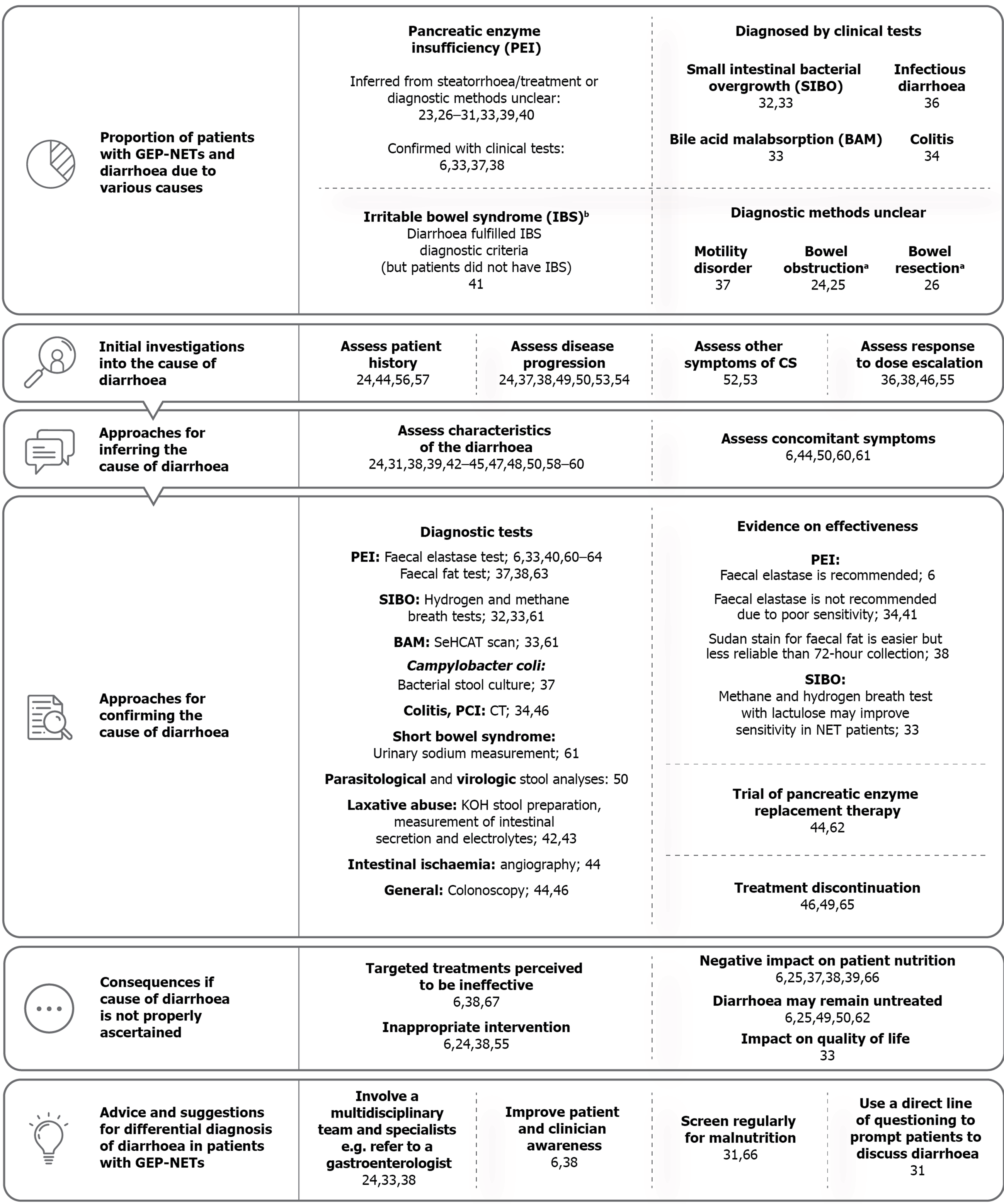Copyright
©The Author(s) 2020.
World J Gastroenterol. Aug 14, 2020; 26(30): 4537-4556
Published online Aug 14, 2020. doi: 10.3748/wjg.v26.i30.4537
Published online Aug 14, 2020. doi: 10.3748/wjg.v26.i30.4537
Figure 2 Overview of final framework of themes from included studies.
This figure presents the thematic framework of evidence identified from the 47 included articles. It does not include all possible causes of diarrhoea or diagnostic tests that could be used to investigate diarrhoea in gastroenteropancreatic neuroendocrine tumours (GEP-NET) patients, and does not take into account the quality of the evidence for each theme. aBowel resection can lead to conditions that cause diarrhoea - these were not specified by the included studies. The source of bowel obstruction e.g., the NET itself, was not confirmed. bOne-fifth of patients with small bowel or pancreatic NETs met the criteria for irritable bowel syndrome (IBS) with diarrhoea demonstrating how patients with GEP-NETs can be initially misdiagnosed with IBS, or could have synchronous NET and IBS diagnoses[41]. BAM: Bile acid malabsorption; CSD: Carcinoid syndrome diarrhoea; CT: Computed tomography; HBT: Hydrogen breath test; MBT: Methane breath test; GEP-NET: Gastroenteropancreatic neuroendocrine tumour; KOH: Potassium hydroxide; PEI: Pancreatic enzyme insufficiency; PERT: Pancreatic enzyme replacement therapy; SeHCAT: Tauroselcholic [75 selenium] acid.
- Citation: Khan MS, Walter T, Buchanan-Hughes A, Worthington E, Keeber L, Feuilly M, Grande E. Differential diagnosis of diarrhoea in patients with neuroendocrine tumours: A systematic review. World J Gastroenterol 2020; 26(30): 4537-4556
- URL: https://www.wjgnet.com/1007-9327/full/v26/i30/4537.htm
- DOI: https://dx.doi.org/10.3748/wjg.v26.i30.4537









